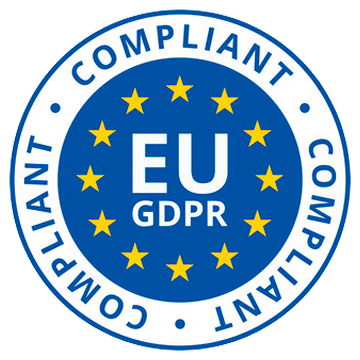In a fast-paced work environment, it’s easy to make the mistake of sharing Microsoft Office documents with the wrong team. While you can claim an error, you can’t control whether or not the other party will attempt to open the document. If the contents of the document are sensitive, it can amount to a data leak.
The scenario above is one of many where learning how to password protect a Word document is crucial. The ability to add a password to a Microsoft Office document often goes under the radar.
You can easily set a Word document password through Office 365. Or, you can take advantage of the many functionalities of Sizle, a secure document sharing platform for work teams.
Seven reasons to password protect a Word document
For many professionals, considering how to password protect a Word document only seems like extra work. But recent data shows the average cost of a data breach in companies with 500 or fewer employees is $2.35 million. For companies with more employees, the cost implications can reach $4.25 million.
The numbers above indicate there are plenty of reasons to ensure secure document sharing with a password. Other reasons include:
Privacy
At the top of our list is privacy. There are times when you’ll be working on a document containing delicate information like employee details, operating procedures, or project data.
Documents of this nature are for your eyes only. Therefore, it’s best to protect the doc from possible intruders. For a collaborative project that requires document tracking or sharing across multiple companies, a password ensures privacy.
Even if unauthorized employees can access the doc as it travels from one company server to another, a password stops them from opening it. The same goes for personal projects. If you have a home office, a password protection layer will ensure complete privacy.
Protection Against Data Leaks
Information and data are fragile entities and need as much protection as possible. While data leaks may be intentional or otherwise, they do happen. In 2020, the USA saw over 1000 data leaks which affected up to 150 million people.
An example of an unintentional data leak happens while working on a shared WiFi in a co-working space. Or maybe you borrowed a colleague’s laptop to complete a time-sensitive document.
Regardless of how it happens, passwords on a Word 365 file will limit the impact of a data leak. It’s hard to see how data leaks can negatively affect your team if a password deters unauthorized personnel.
Cybersecurity Teams
Hacking, data breaching, and data security are interesting fields relating to cyber security. An ethical hacker has the right to hack and test various systems to protect against unethical entities.
While Office 365 is not an ethical hacking software, it’s useful for information transfer. Inevitably, it may contain sensitive information about loopholes in a security layer.
And, while an ethical hacker may be able to protect their computer from data breaches, clients may not have that skill. But, if you know how to password protect a Word document, information sharing during cybersecurity projects will be a breeze.
Emergency Security Layer
Unethical hackers across the globe are working tirelessly to breach network securities of different organizations globally. Sometimes, these hackers may find their way into your database. Even if they don’t gain full entry, they may be able to tamper with your security.
Passwords on your Word document can foster secure sharing while the network is down. Fixing security breaches can take time, depending on the sophistication of the hacker’s attack. While it’s going on, password protection is a brilliant fail-safe for Word documents.
Authorization
Professionals and teams working in the tax or accounting industries often have to manage information from multiple clients. In these niches, password protection is a way to ensure project authorization.
You’ll probably work on docs from diverse companies across different document-sharing workflows platforms. You’ll need to protect client authority, as well as that of your organization. Although there are better ways to ensure control, password protection is a good start.
Content Integrity
Knowledge of how to password protect a Word document is a straightforward way to ensure content integrity. Say you’re making changes to a shared document. Or maybe you have approved the contents of a doc and are looking to prevent further changes to it.
While revoking access to the document can disrupt the workflow, a password will come in handy. You’ll be able to ensure the contents of your Word document stays the same without too much fuss.
Curbing Piracy
Writers and creatives are the categories of professionals that have to deal with the effects of piracy. The same applies to people working on patent-level solutions and technology.
Often, creatives will have to partner with distribution and publishing agencies. And in substantial distribution companies, it’s easy for documents containing creative work to go astray.
Although copyright laws in countries like the United States are comprehensive and protect your work, it’s the reverse in other countries. Even if you live in the USA, you may be unable to apply for copyright before the would-be pirate.
Piracy is duplicating your work without prior authorization. And it can happen if the pirate gets access to your document. Whatever you’re building, as long as you have it in a Word document, you should think of adding a password.
A password may not outrightly stop piracy, but it will curb it. Finding the person who is reproducing your work can be expensive and time-consuming. But, with a shared password, it’s easier to track the source of the leak.
How to password protect a Word document
Available in more than 130 countries globally, Sizle is a document workspace and analysis app useful to clients, customers, and partners across the globe. Signing up to Sizle is free and easy, all you need is an existing Google, Facebook, or LinkedIn account, or you can use your personal or work email address. Besides helping you secure your Word document, Sizle is also useful for document conversion from one format to another.
Sizle helps working professionals share documents safely without mistakes like the doc getting to the wrong person. The interface on Sizle is simple, and the process of password protection is quick and easy.
You can also password protect a PPT, XLS and XLSX files online for free.
Here’s how to add a password to your Word document using Sizle:
Register on the platform
Firstly, you’ll need to sign up or sign in to Sizle for free.
Upload the relevant document
After signing up, you’ll get a personalised dashboard and workspace. Navigate your way to the uploader and add the Word document you need to password protect.
Lock the document
After editing the contents of the Microsoft office file, click the Share button on the toolbar. Select the password tab and follow the prompt to add a security code to your doc. From the settings icon, you can also share the document with members of your team via Sizle.
How to password protect a Word document in Office 365
Microsoft is a technology organization that understands the need to protect your Word document. As a result, the company has designed different functionalities to protect your Word document from any breach. Each of these processes involves tweaking the settings of your Word document.
If you want people to view your Word document without adding any changes, you can set it to open as a read-only file. If you’re going to give collaborators the right to edit with restrictions, there’s a setting for that on Microsoft Office 365.
Another way to protect your document is having it marked as a “final” copy. But none of these methods are as good as setting a password on Office 365.
How to password protect a Word document on Office 365 is a myth you can demystify by following this step-by-step:
Open the document
If you have plans to protect your Microsoft Office account, you may need to try better security measures. But if you’re working on a single document, you can protect it individually, and the first step is opening the Word document.
Select the right function in the toolbar
The toolbar is usually in the upper part of the Microsoft Word environment, near the top of your computer screen. Find the File icon in the toolbar after opening the doc. When you click on the file icon, it takes you away from the environment where you’re typing your content.
Select the password protection Icon
In the new tab, there are many options to choose from. These include Info, New, Open, Save, Save As, Print, Share, Export, Close, Account, and Options.
The one to click for password protection is Info. After clicking on Info, the system will bring up different actions, including Protect Document, Inspect Document, and Versions.
Encrypt the Word document
Of course, to add a password to your Word document, you’ll need to click Protect Document. Under Protect Document, you also have varying security options.
As mentioned above, you can restrict editing, mark as final, restrict access, add a signature, and encrypt with a password. In this case, you’re to choose , Encrypt with a Password.
When you choose the encrypt with password icon, a box comes up with space for typing in a password. Your password should depend on what you can remember easily and how complex you need it to be. After typing in the password, click OK. We recommend using a mix of numbers and letters relating to the project.
Confirm the password
The system will ask you to type the password again in a confirmation box to ensure you remember it consciously. After confirming the password, you have successfully added a password to your document. You and other collaborators will always need that password before editing a document.
What to consider before adding a password to a Word document
Privacy is important; no doubt about that. But before you password protect a Word document, some factors can inform your eventual decision.
These considerations include:
- Is the document private? You need to know if you’ll need other people to work on the document. If you aren’t the only potential user, you can simply restrict editing or use a platform like Sizle for secure collaborations.
- How do I want to protect the document? Different ways of adding password protection to a Word document exist, so you have to choose one.
- How strong do I want my password? A password is for your protection, but it shouldn’t stress you. When you add a password to a document through Office 365, there’s nothing like recovery. Hence, your password should be a Word or combination you can easily remember. While it should be easy to remember, you shouldn’t have a predictable password.
Final thoughts on adding passwords to Word documents
Knowing how to password protect a Word document can revolutionize your document sharing and work collaboration efforts. While Office 365 offers you a route to adding passwords to your files, there’s one vital flaw. It’s impossible to recover your password if you forget it.
If you don’t find it easy to remember passwords, your best bet is to use a platform like Sizle, which offers recovery options. That way, you won’t lose your document if you forget the password.



